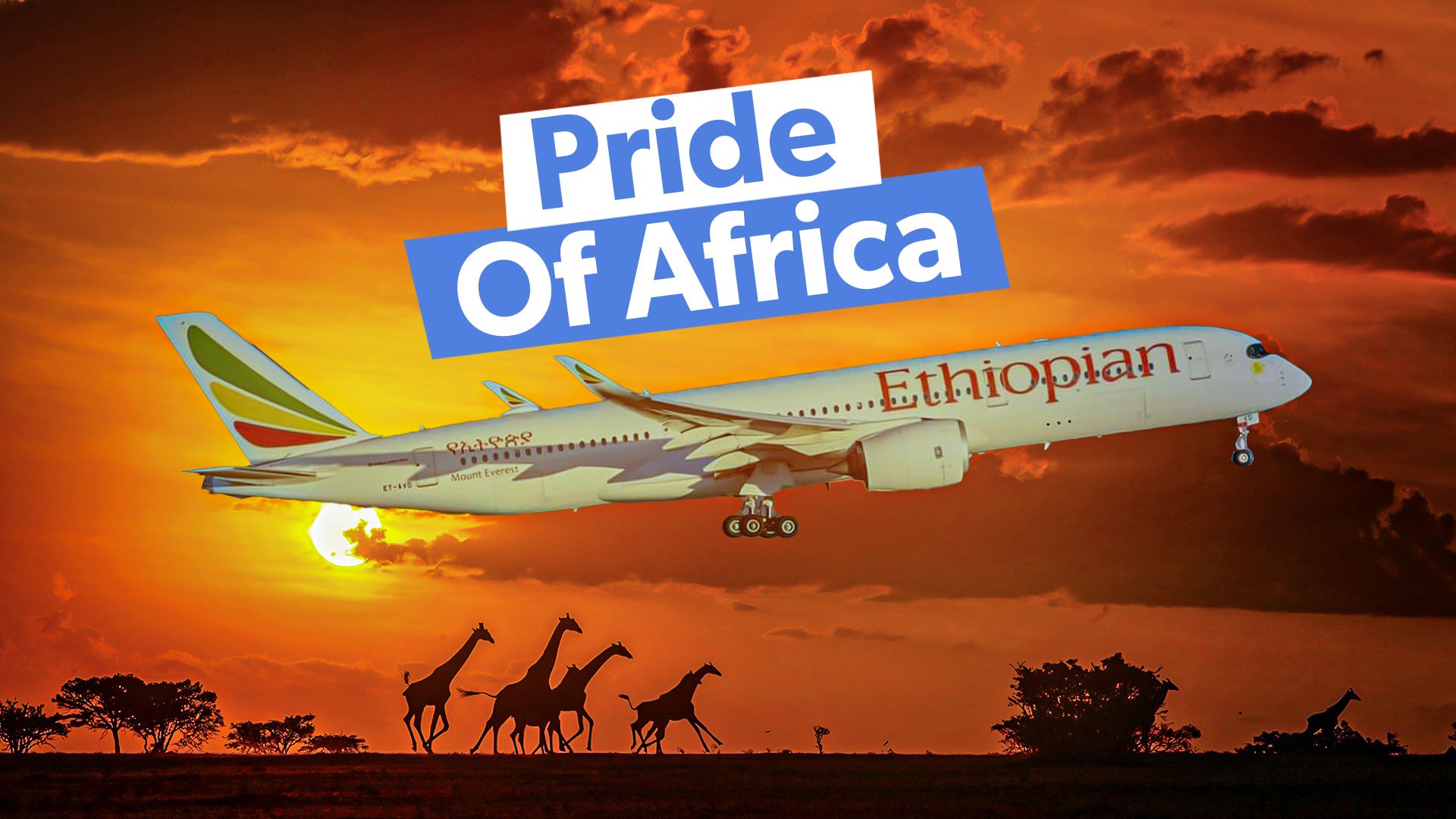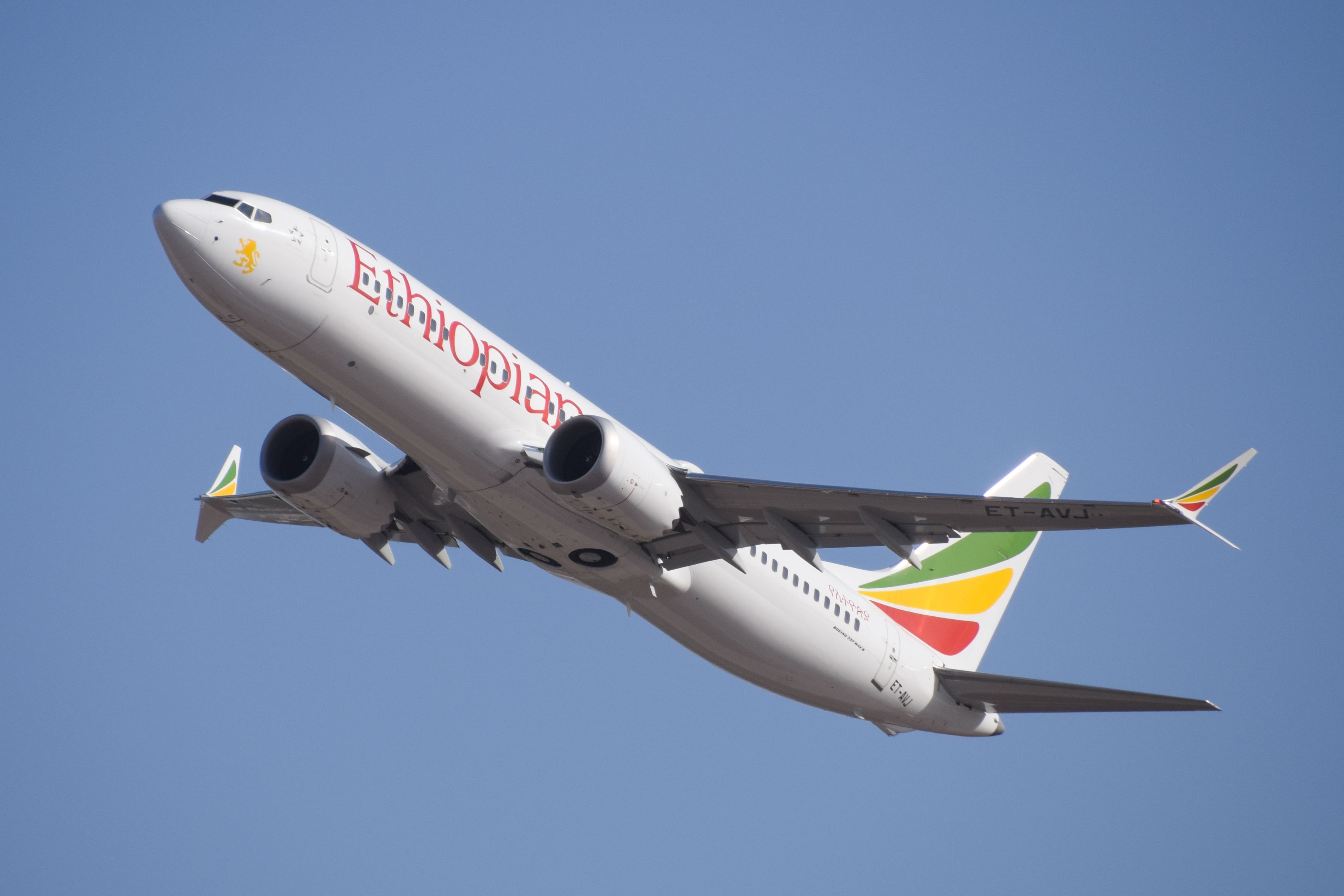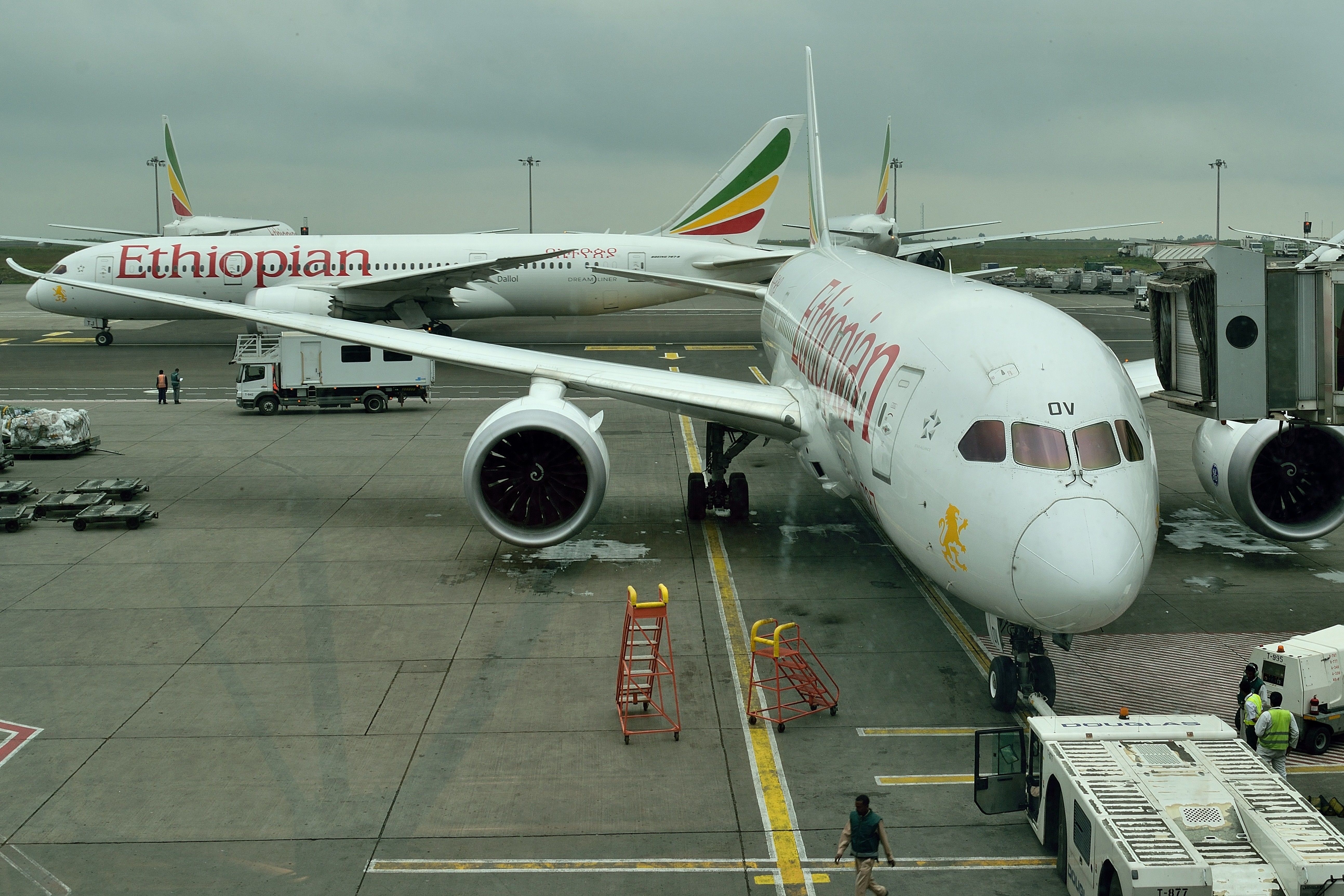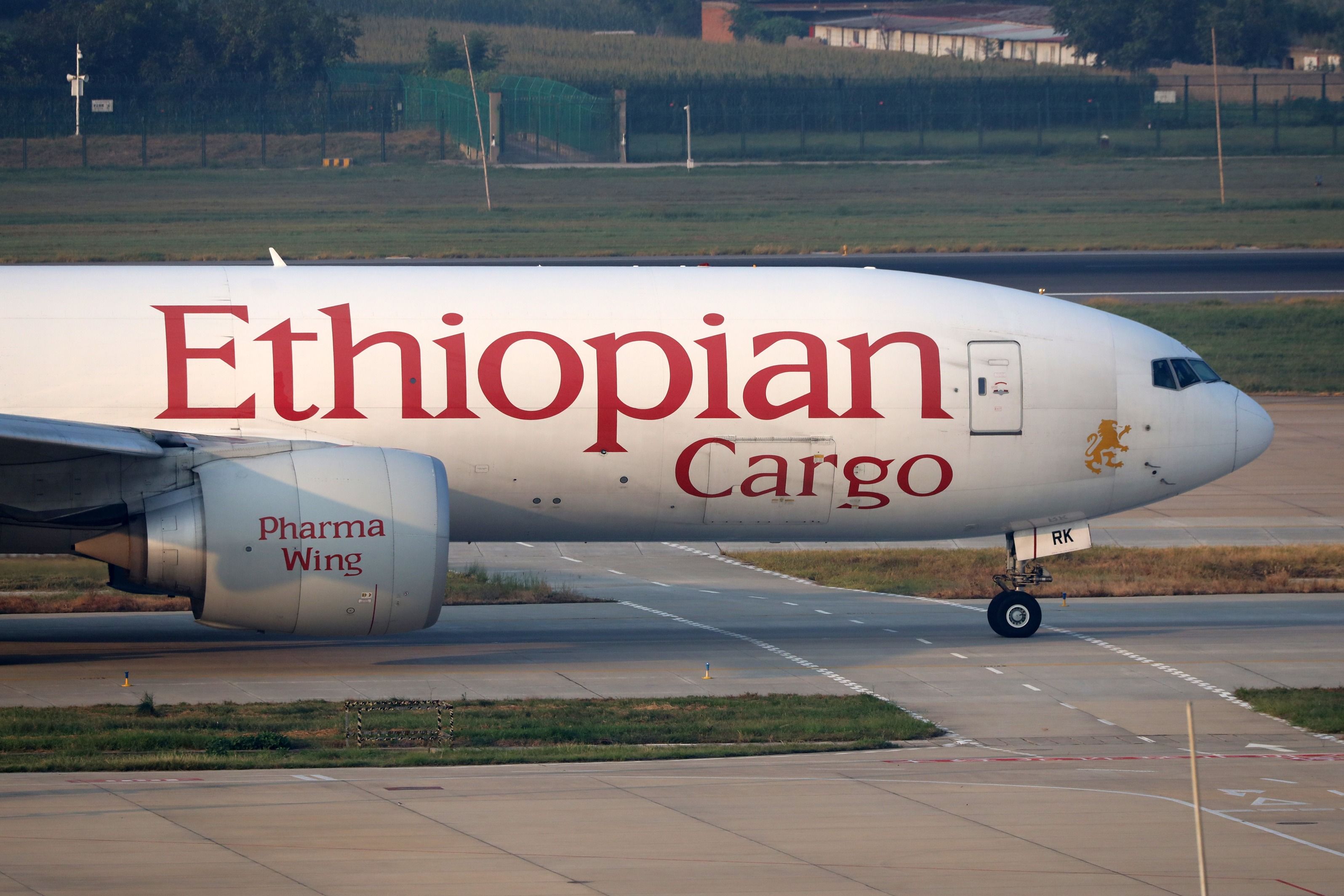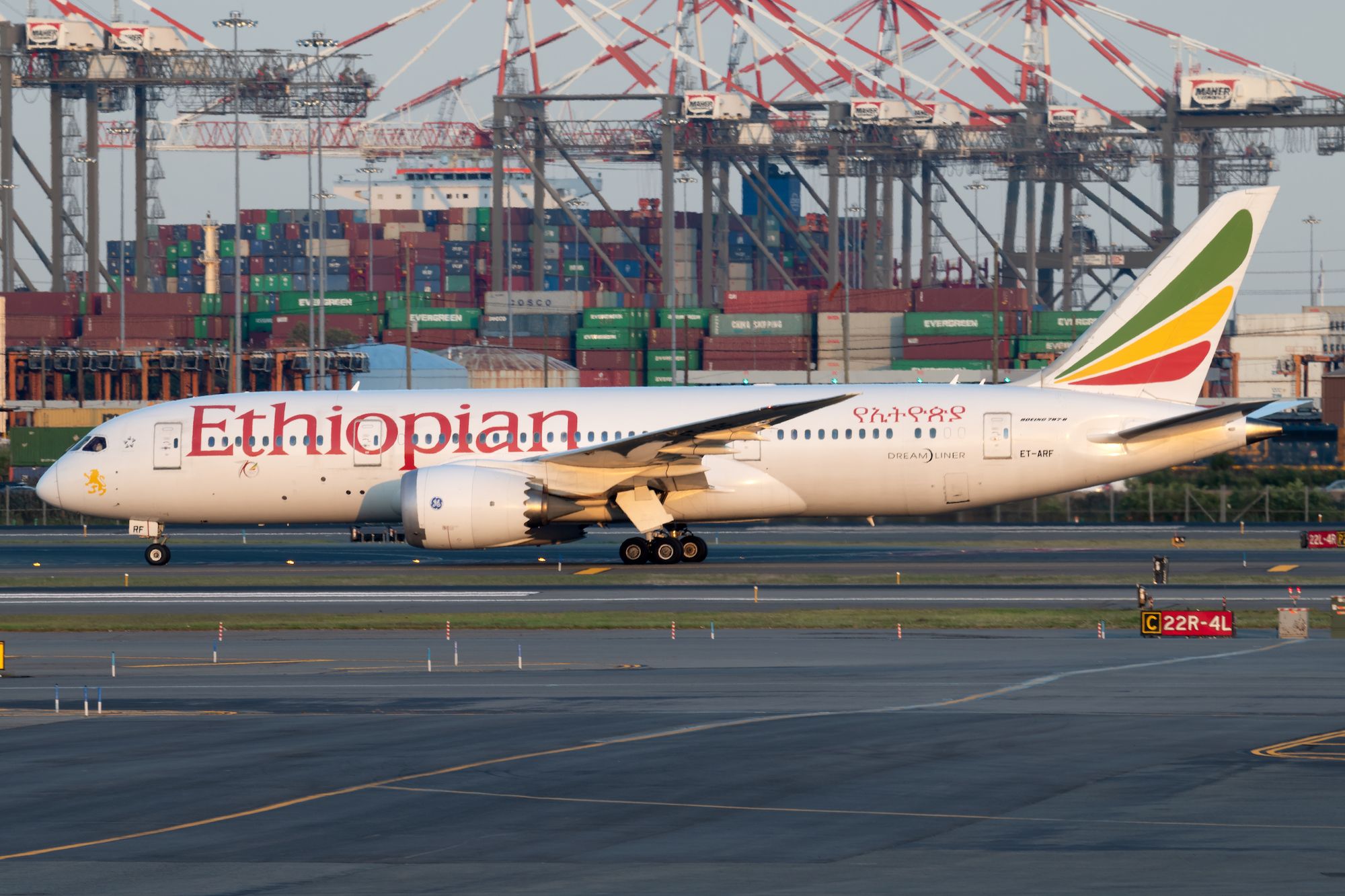Summary
- Ethiopian Airlines is the largest carrier in Africa, owned by the Ethiopian Government, with 136 aircraft and 70 more on order.
- The airline has invested in African aviation through shareholdings in multiple airlines and offers services across the globe.
- Ethiopian Airlines’ diverse fleet includes Boeing and Airbus aircraft, with plans to double its overall fleet.
Ethiopian Airlines (ET) is the flag carrier of the African nation of Ethiopia and has developed itself as the largest airline on the African continent. According to ch-Aviation, the carrier has 136 aircraft on its books and another 70 on order. Today, the airline is 100% owned by the Ethiopian Government and is led by its chairman, Yilma Merdassa, and Chief Executive Officer, Mesfin Tasew. According to Timesaerospace, the carrier currently serves 155 passengers and 68 cargo destinations, with an international reach across Africa, Asia, Europe, and North and South America.
A member of the world’s largest airline alliance, the Star Alliance, ET assists in feeding many travelers to and from its Addis Ababa Bole International Airport (ADD) hub. Founded in December 1945, it commenced operations the following year and routinely operated domestic services across Ethiopia as Ethiopia Air Lines (EAL). It expanded its reach further with international services by 1951 and rebranded itself as the now Ethiopian Airlines in 1965 when it became a share company.
While the carrier has proudly flown the Ethiopian flag and colors for over eight decades, it has also invested heavily in African aviation, with shareholdings in:
- Asky Airlines 27%
- Malawi Airlines 49%
- Nigeria Air 49%
- Zambia Airways 45%
- Guinea Airways 49%
- DHL-Ethiopian Airlines Logistics Services S.C. 51%
- Ethiopian Sky Technologies 51%
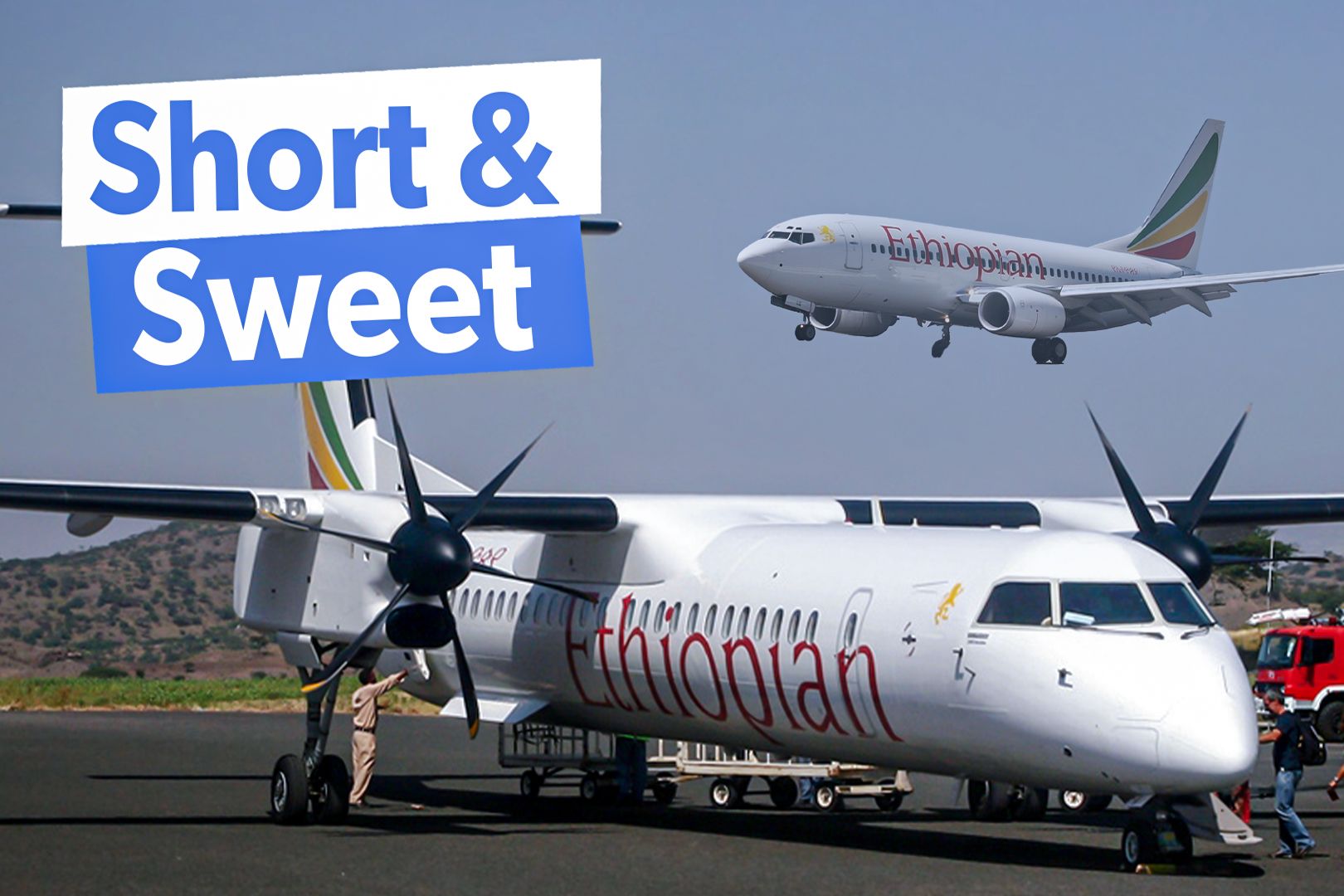
Related
What Are Ethiopian Airlines’ Shortest Routes?
Ethiopian Airlines operates flights on routes that are less than 100 miles.
With an ever-growing fleet and route map from Ethiopia’s capital. Let’s look into which aircraft are taking flight in more detail:
1
Airbus
A350-900
The only Airbus variant in Ethiopian’s fleet, the airline’s collection of 20 Airbus A350-900 is deployed across the carrier’s long-haul network. Ethiopian Airlines has another 11 of this variant on order. Powered by two Rolls-Royce Trent XWB-84 engines, these aircraft have an average age of just 5.2 years and are configured for up to 343 passengers in a 313 economy and 30 business class layout.
The airline was the first African carrier to operate the A240, and ET has ordered an additional four A350-1000s and eleven A350-900.
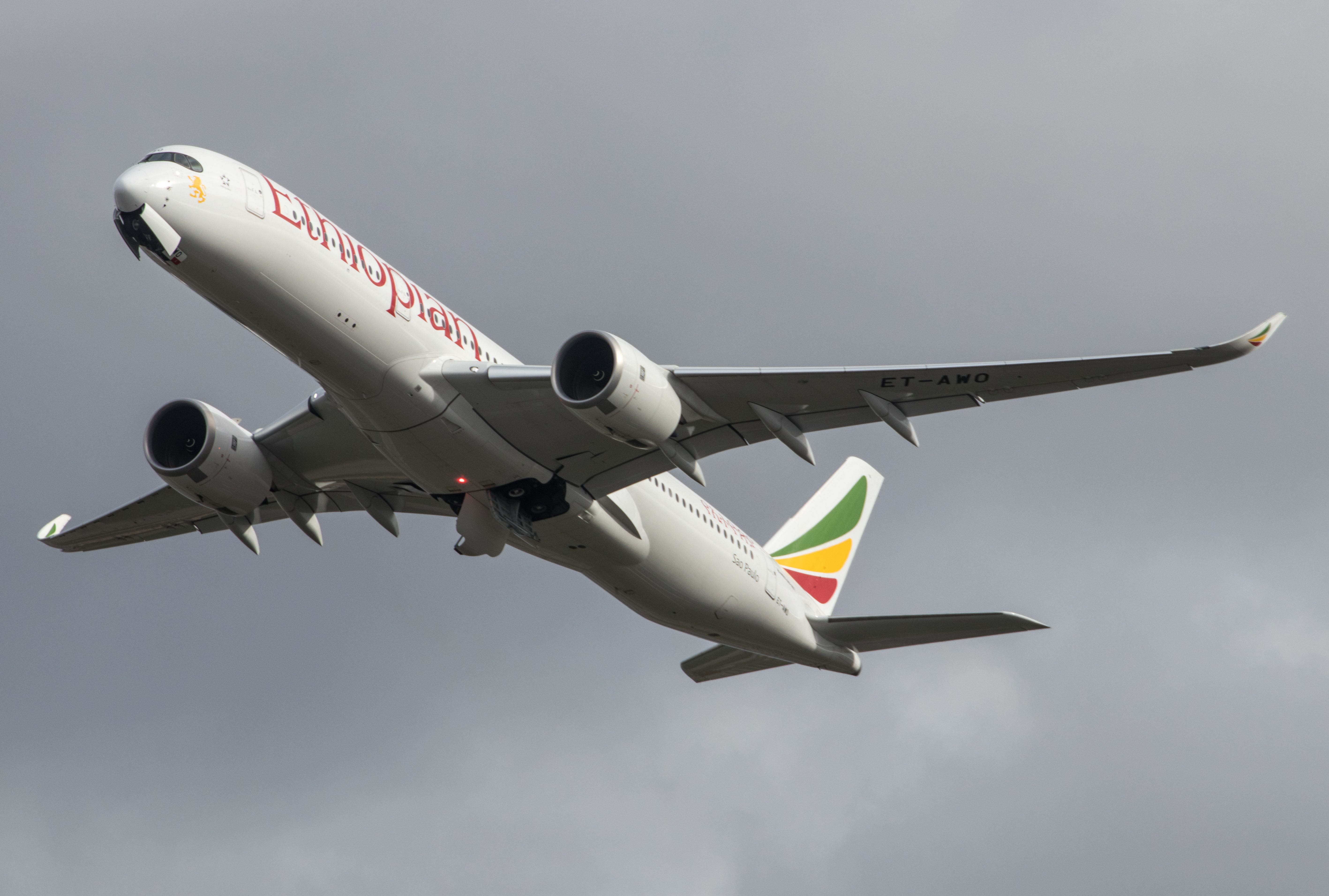
Related
Ethiopian Airlines Becomes The 1st African Carrier To Order The Airbus A350-1000
Africa’s largest airline will welcome four Airbus A350-1000s into its fleet.
2
Boeing Narrowbody
737-700, 737 MAX 8, 737-800
Making up the backbone of Ethiopians’ short-haul international and narrowbody jet network. ET is home to three passenger variants, the 737-700, 737 MAX 8, and 737-800. With a total of 28 active overall, this is made up of the following:
|
Variant |
Number in fleet |
On order |
Historical |
|---|---|---|---|
|
B737-700 |
Two |
– |
Five |
|
B737 MAX 8 |
17 |
34 |
Two |
|
B737-800 |
Nine |
– |
13 |
Beginning on June 16, Ethiopian will start flying from Addis Ababa to the Polish capital, Warsaw, via Athens. Running four times weekly, it will deploy the 160-seat Boeing 737 MAX 8 on the 2,773 nautical miles (5,136 km) route.
3
Boeing Widebody
767-300ER, 777-200LR, 777-200ER, 787-8 & 787-9
Photo: Hailu Wudineh Tsegaye | Shutterstock
Five variants make up the widebody Boeing fleet at Ethiopian. While the 767-300ER has been marked as inactive since April 2023, the carrier operates Boeing’s popular 777 and 787 to make up the rest of the long-haul fleet. The Dreamliner 787-8 is the most popular type, with 17 active in service. However, with nine active 787-9, eleven more are on order, which will round out the carrier with 20 of the planes.
|
Variant |
Number in fleet |
On order |
Historical |
|---|---|---|---|
|
B767-300 |
One (inactive) |
– |
– |
|
B777-200LR |
Six |
– |
– |
|
B777-200ER |
Four |
– |
– |
|
B787-8 |
17 (plus two inactive) |
– |
– |
|
B787-9 |
Nine (plus one inactive) |
11 |
– |
|
B777-9 |
– |
Eight |
– |
Additional Boeing aircraft are expected to join the Star Alliance carrier as the airline plans to double its overall fleet by 2023. The airline has made a historical agreement with Boeing to purchase up to 20 777-9 aircraft. With this agreement, Ethiopian Airlines will become the first 777X customer in Africa.
4
Turboprop
DHC-8-Q400
To serve the airline’s shorter regional and domestic operations, Ethiopian deploys the De Havilland Canada DHC-8-Q400 aircraft. Currently, the airline has 29 of these aircraft active, with one parked. Eight more are on order to boost its turboprop fleet to 38.

Related
What Are Ethiopian Airlines’ Shortest Routes?
Ethiopian Airlines operates flights on routes that are less than 100 miles.
5
Freight
737-800BCF/SF, 767-300ER & 777-200F
An integral part of Ethiopian Airlines’ success as the largest airline in Africa is its robust cargo operations. The airline currently has seven dedicated cargo aircraft comprising three variants: the 737-800, 767-300, and 777-200. Dedicated cargo destinations include:
|
Continent |
Airport |
|---|---|
|
Africa |
Accra, Antananarivo, Brazzaville, Bujumbura, Casablanca, Cairo, Enugu, Johannesburg–O. R. Tambo, Khartoum, Kigali, Kinshasa–N’Djili, Lagos, Pointe-Noire, |
|
Asia |
Ahmedabad, Bangalore, Beirut, Chennai, Chongqing, Delhi, Dhaka, Djibouti, Dubai–International, Guangzhou, Ha Noi, Hong Kong, Hyderabad, Jakarta–Soekarno-Hatta, Jeddah, Mumbai, Nanjing, Ürümqi |
|
Europe |
Brussels, Copenhagen, Liège, London–Heathrow, Luxembourg, Maastricht/Aachen, Milan–Malpensa, Zaragoza |
|
North America |
Mexico City (Felipe Ángeles), Miami, |
|
South America |
Bogotá, Santiago de Chile, São Paulo–Guarulhos, |
Photo: KITTIKUN YOKSAP | Shutterstock
A more detailed breakdown of the airline’s cargo fleet is:
- One 737-800(BCF), with an average age of 17.1 years
- Three 737-800(SF), average age of 23.1 years
- Two 767-300ER(BDSF), average age of 20.4 years
- Ten B777-200F, with two more on order and another one already retired. The average age of these aircraft is 7.3 years.
What are your thoughts on Ethiopian Airlines’ fleet? Please let us know in the comments!
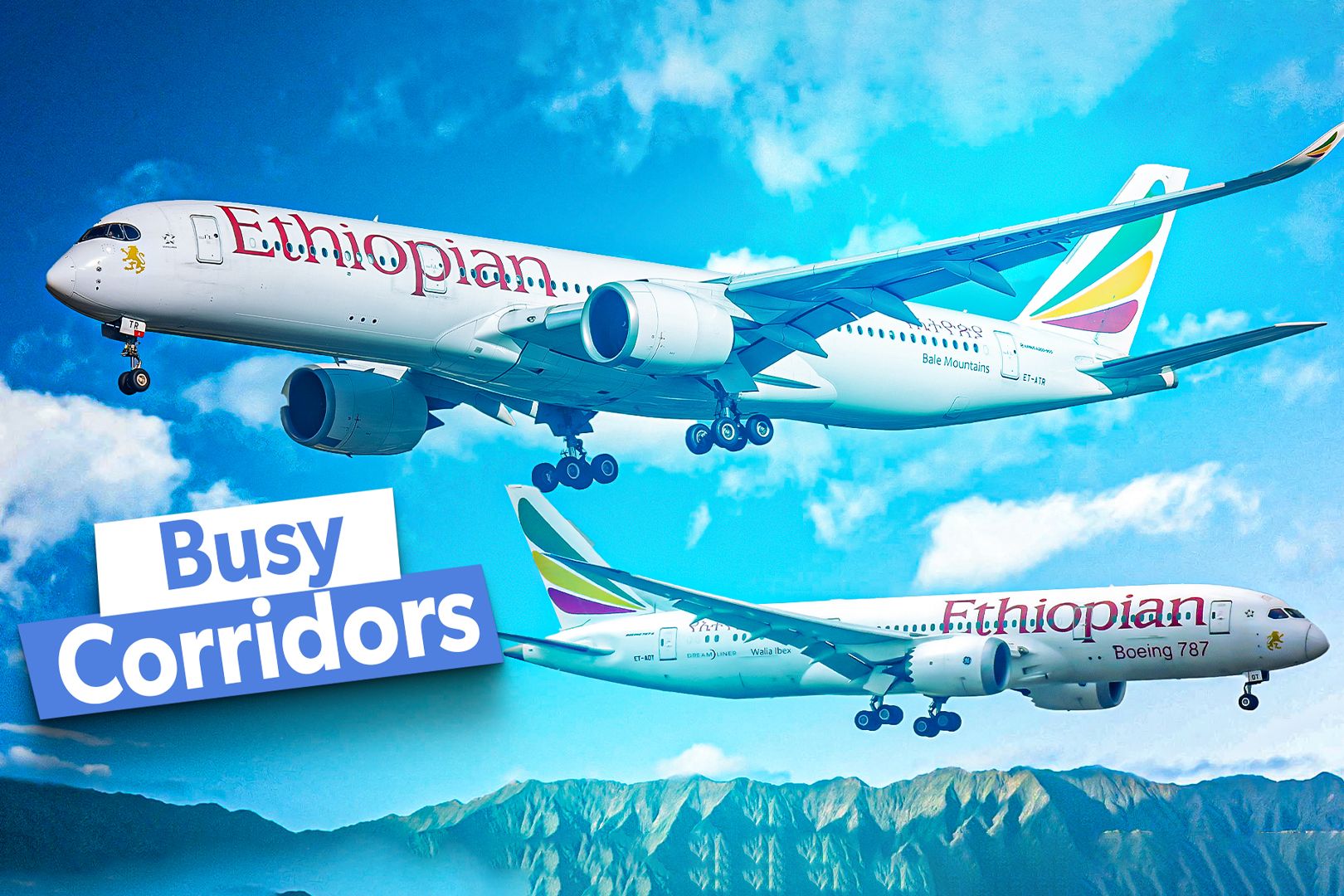
Related
Top 10: These Are Ethiopian Airlines’ Highest Capacity Routes
All these routes provide more than 15,000 monthly seats and are highly valued by the airline.

